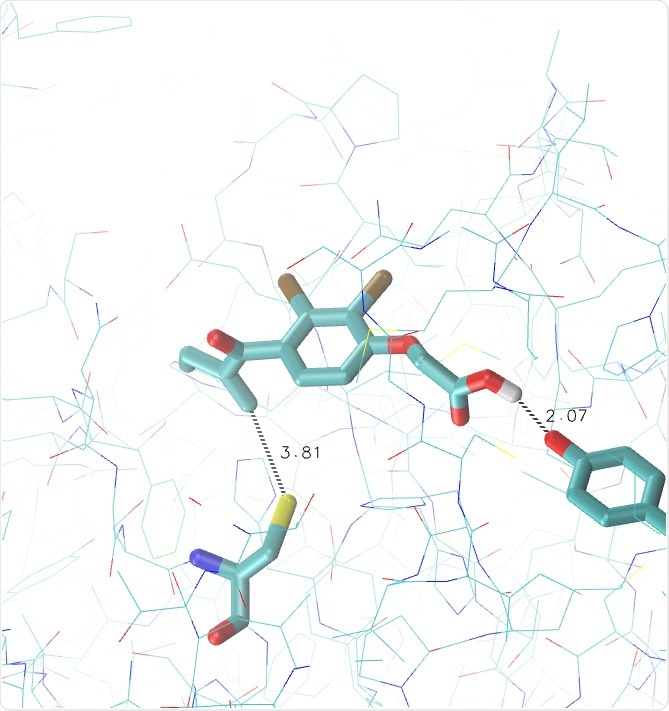SARS-CoV-2, the causative agent of COVID-19, is a single-stranded, positive-sense RNA virus with a genome size of about 30 kb. The genome of SARS-CoV-2 contains several genes encoding both structural and non-structural proteins. There are two cysteine proteases in SARS-CoV-2 that are required for the formation of non-structural proteins. One of these proteases is called chymotrypsin-like cysteine protease or main protease, whose recognition sequence cannot be identified by host proteases. This makes the main protease an important target for the development of therapeutic interventions.
Since the emergence of the COVID-19 pandemic, several antiviral drugs have been repurposed to treat moderate-to-severe COVID-19 patients. Although some of these drugs have shown beneficial effects in reducing the symptom severity, most have failed in clinical trials to control disease progression and reduce mortality.
The current study has been designed to identify potential inhibitors of SARS-CoV-2 main protease by screening already clinically approved drugs.
Current study design
The scientists have conducted in silico analysis, molecular docking experiments, and activity assays to identify potential inhibitors of SARS-CoV-2 main protease as well as to determine the molecular orientation and binding affinity between molecules. Specifically, they have tried to identify reversible competitive inhibitors and irreversible inhibitors that are capable of effectively interacting and covalently binding the active site of the main protease.

Molecular docking of ethacrynic acid at the active site of SARS-COV-2 Mpro. The protein structure correspond to the PDB entry 6LU7. Ethacrynic acid, Cys 145 and Tyr 54 are displayed in licorice. Reported distances are in Å.
Important observations
Reversible competitive inhibitors
Initially, the scientists have searched for competitive inhibitors of SARS-CoV-2 main protease by analyzing a total of 2111 FDA-approved molecules. Docking analysis scores ranked these molecules and the molecules with appropriate binding affinity and binding energy have were chosen for further analysis.
The researchers have conducted a series of in vitro experiments to determine the effect of certain inhibitors, such as Ciclesonide, Delafloxacin, Dutasteride, Netupitant, Tadalafil, Saquinavir, on main protease. Specifically, the main protease-mediated proteolytic cleavage of a substrate peptide has been analyzed in the presence or absence of inhibitors. According to the findings, none of these inhibitors have shown significant inhibitory activity against SARS-CoV-2 main protease.
Irreversible inhibitors
Given that cysteine 145 is the most accessible residue in the main protease active site, the scientists have focused only on inhibitors capable of binding to the sulfhydryl group of amino acid cysteine. After comparing several compounds with good binding affinity, they have finally selected ethacrynic acid as a potential candidate inhibitor of the main protease.
Ethacrynic acid is an unsaturated ketone derivative of aryloxyacetic acid, which is a clinically approved diuretic for treating cardiovascular, renal, or liver disorders. According to the in-silico analysis findings, a favorable interaction pattern between ethacrynic acid and main protease has been observed. Interestingly, the scientists have observed that ethacrynic acid can inhibit the main protease at a very low concentration (in 8 – 9.5 µM range), which makes ethacrynic acid the most potent protease inhibitor compared to other approved inhibitors, such as boceprivir and GC376.
Study significance
The study has identified ethacrynic acid as a potent inhibitor of SARS-CoV-2 main protease that can be repurposed as a potential COVID-19 drug. The inhibitory concentration of ethacrynic acid observed in the study is far below its cytotoxic concentration observed by previous studies involving various cell lines. Moreover, by intravenously administering 100 mg of ethacrynic acid, a plasma concentration of 10 µM can be achieved, equivalent to the inhibitory concentration of ethacrynic acid for the main protease. Given these observations, the scientists believe that ethacrynic acid can be potentially used clinically to prevent the propagation of SARS-CoV-2 infection.
However, they have cautioned that because ethacrynic acid is a strong diuretic, excessive use can impair the fluid balance of the body. Moreover, because any molecule with a reactive sulfhydryl group can bind to ethacrynic acid, the compound's inhibitory efficacy can be reduced in cells containing a high amount of glutathione.